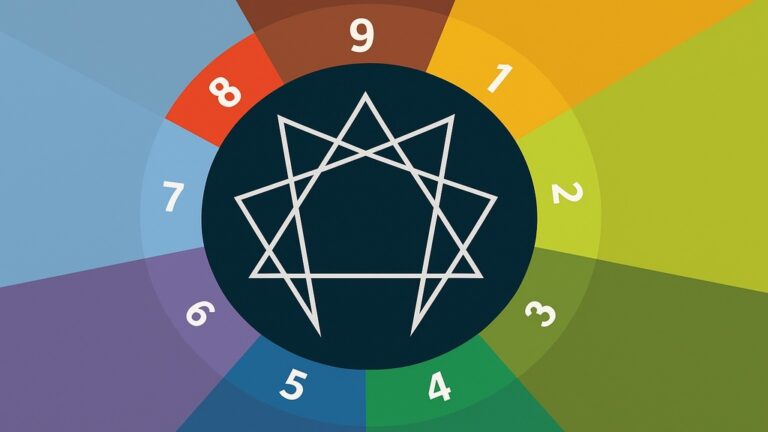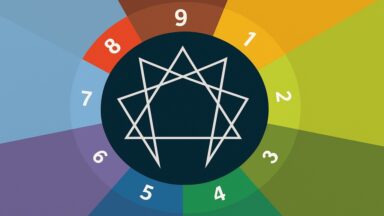10 Examples of Life Purpose That Will Help You Find Yours

Have you ever wondered what your purpose in life is? Answering this question can provide us with a profound sense of direction and personal satisfaction. In this article we explore several examples of life purposes that may inspire you to find yours and live a fuller, more meaningful life.
Table of Contents
- What Is the Purpose of Life?
- 10 Examples of Life Purpose
- Educating and Sharing Knowledge
- Promoting Health and Wellness
- Encouraging Spirituality and Inner Connection
- Creating a Loving and United Family
- Innovating in Science and Technology
- Protecting the Environment
- Supporting Animals and Wildlife
- Connecting People With Nature
- Developing Artistic Skills
- Promoting Inclusion and Diversity
- Is the Life Purpose Related to a Work Activity?
- How to Find My Life Purpose?
What Is the Purpose of Life?
Life purpose is a deep sense of direction that guides us throughout our existence, helping us to make decisions and set priorities. This purpose provides clarity and allows us to align our actions with our deepest values and passions. Discovering it is a process that goes beyond simple intellectual reflection, involving an intimate connection with our inner self.
For many people, life purpose is intrinsically linked to their natural gifts and talents. These can range from art and music to science and technology. Recognizing and developing these gifts opens doors to opportunities that allow us to contribute meaningfully to society, while experiencing deep personal satisfaction.
Another essential aspect of life purpose is the positive impact we can have on others. Often, finding our purpose involves serving others and improving the lives of those around us. This can manifest itself in a variety of ways, such as educating, caring for the health of others, protecting the environment or supporting disadvantaged communities. By living in alignment with our purpose, we not only enrich our own lives, but also contribute to the well-being and development of society as a whole.
In the series Transcendence, available on Gaia, one episode is dedicated to exploring this topic in depth and invites us to reflect on the different stages of life and how each one offers unique opportunities to discover and rediscover our purpose, fostering a continuous journey of self-awareness and growth.

10 Examples of Life Purpose
Finding your purpose may seem like a challenging task, but drawing inspiration from the purposes of others can be a great place to start. Here are ten examples of life purposes that can help you find yours and live a life full of meaning and direction.
-
Educating and Sharing Knowledge
Dedicating your life to education and sharing knowledge can be an incredible source of satisfaction. Educators have the power to positively influence the lives of their students, helping them develop skills, acquire knowledge and discover their own talents. This purpose not only benefits those who receive education, but also contributes to the progress of society as a whole.
-
Promoting Health and Wellness
Working in the field of health and wellness is a profound way to positively impact others. Professionals such as physicians, therapists, personal trainers and nutritionists dedicate their time to improving people’s physical and mental health, making a significant impact on their lives and the community at large.
-
Encouraging Spirituality and Inner Connection
Guiding others on their spiritual journey is an enriching life purpose. Helping people find peace and harmony within themselves, through meditation, spiritual counseling or religious direction, offers tools and support for spiritual growth and self-knowledge.
-
Creating a Loving and United Family
Creating and maintaining a loving and united family is a purpose that contributes greatly to the well-being and happiness of its members. This purpose focuses on building relationships based on love, respect and mutual support. Parents, grandparents and other family members who promote a healthy and loving home environment positively impact the lives of their loved ones.
-
Innovating in Science and Technology
Innovation in science and technology can transform lives and improve our understanding of the world. Scientists and engineers are dedicated to researching and developing new ideas, products and solutions, opening up new possibilities and solving complex problems that affect humanity.
-
Protecting the Environment
Protecting the environment is a noble and necessary purpose today. Activities such as biodiversity conservation, combating climate change and promoting sustainable practices are essential. Environmentalists and activists work to preserve our planet for future generations by raising awareness and advocating actions that promote sustainability.
-
Supporting Animals and Wildlife
Those who feel a deep connection to animals may find their purpose in supporting them. Whether through rescuing and rehabilitating animals, advocating for their rights or preserving their habitats, veterinarians and activists strive to ensure animal welfare and protect endangered species.
-
Connecting People With Nature
Guiding people in outdoor activities and educating about the importance of nature can bring joy and well-being to individuals and communities. Environmental educators and nature guides work to cultivate a healthy relationship between humans and the natural environment, promoting a greater appreciation and respect for the natural world.
-
Developing Artistic Skills
The development and expression of artistic skills can enrich both the creator and his or her audience. Artists, musicians and writers express their emotions and visions through their work, inspiring and moving others. This purpose allows for self-expression and personal growth, contributing to the cultural heritage and beauty of the world.
-
Promoting Inclusion and Diversity
Working to build a more just and equitable society is a meaningful purpose. Advocating equal opportunity and respect for all people, regardless of their differences, is essential. Activists and community leaders strive to break down barriers and create environments where all voices are heard and valued, promoting social cohesion and justice.

Is the Life Purpose Related to a Work Activity?
Life purpose does not necessarily have to be linked to a work activity. Many people find their purpose in aspects of life that are not related to their work. For example, devoting time to volunteer activities, such as helping disadvantaged communities or participating in social justice projects, can provide a deep sense of purpose and satisfaction without being associated with a paid occupation.
Life purpose is an expression of our essence and our deepest values, and can manifest itself in various areas of our lives. Some people discover their purpose in their dedication to hobbies and talents, such as art, music or sports, which allow them to express their creativity and contribute to the well-being of others in a non-work-related way. Others find their purpose in improving their personal relationships, cultivating empathy and compassion in their immediate environment.
Finally, purpose can also focus on personal and spiritual growth. Practicing meditation, working on personal development, and cultivating meaningful relationships are examples of how one can live one’s purpose without it being directly related to a professional career. In the end, the most important thing is to find what gives us a sense of fulfillment and happiness, regardless of whether or not it is linked to a work activity.
How to Find My Life Purpose?
Finding purpose in life is a personal process that unfolds uniquely for each individual. There is no single path or immediate answer. It is an inner journey that requires honesty, introspection, and connection with what truly resonates with you. Listening to your intuition and allowing yourself to feel what moves you from within is the first step toward a meaningful life.
On this path, it can be helpful to pay attention to the signs and synchronicities that appear in your day-to-day life. Sometimes, the universe communicates through small details, unexpected encounters, or moments of clarity that seem to align with your deepest concerns. Being present and receptive to these messages can provide subtle yet powerful guidance.
Another way forward is by observing the activities that give you energy, joy, or a sense of fulfillment. What you do with enthusiasm and without effort is often aligned with your life mission. Exploring different experiences, learning new things, and allowing yourself to change direction are also valid ways to refine your purpose over time.
Remember that finding your purpose is not a fixed goal, but an evolving process. As you change, grow, and get to know yourself better, your purpose may transform. The essential thing is to stay in tune with yourself, cultivate your authenticity, and keep moving forward with intention and awareness.
What the Enneagram Is and How to Identify Your Dominant Enneatype

The Enneagram is a tool for self-knowledge that describes nine personality types, each with a particular way of thinking, feeling, and relating to the world. Its purpose is to help us understand our deepest motivations and the unconscious patterns that shape our lives. In this article, we explore what the Enneagram is, how it works, and how you can discover your dominant Enneatype to better understand yourself and grow as a person.
Table of Contents
- What Is the Enneagram of Personality?
- What Are the Enneatypes and How Are They Classified?
- What Are Wings in the Enneagram and How Do They Influence Us?
- What Does the Enneagram Symbol Represent?
- How to Discover Your Dominant Enneatype
- Self-Knowledge Through the Enneagram
- The History and Origin of the Enneagram
What Is the Enneagram of Personality?
The Enneagram is a system of self-knowledge that organizes human personality into nine main behavioral patterns, known as Enneatypes. Each person tends to live from one of these nine styles, which form during childhood as a response to an emotional wound. From there, we develop a personality that attempts to compensate for that pain, repeating beliefs, attitudes, and reactions we rarely question.
The word “Enneagram” comes from Greek and means “nine lines,” referring to the symbol that represents it. This symbol shows how the nine types relate to each other and helps us understand the changes we experience when we are emotionally balanced or unbalanced. The Enneagram is not a personality test, but rather a map that explains our automatic reactions and the psychological roots behind them.
The most valuable aspect of the Enneagram is that it not only reveals our defense mechanisms but also our potential for transformation. By identifying our dominant Enneatype, we can understand what limits us, what drives us, and what we need to evolve. For this reason, this tool is increasingly used in personal, therapeutic, educational, and professional development processes.
What Are the Enneatypes and How Are They Classified?
The Enneatypes are the nine personality types described by the Enneagram. Each one emerges from an emotional wound that shapes how we see the world and relate to others. These psychological structures are not rigid labels, but rather defense mechanisms developed in childhood to feel safe, loved, or valued. Knowing our dominant Enneatype allows us to understand what deeply motivates us, what our core fears are, and which patterns we tend to repeat unconsciously. Below, we describe each of the 9 Enneatypes in the Enneagram.
- Enneatype 1 (The Perfectionist): Their core wound is the belief that they are not good enough. To compensate, they constantly strive to do things “right,” following strict rules and high standards. They are usually responsible, ethical, and committed, but can also be rigid, critical, and prone to frustration when things don’t go as expected.
- Enneatype 2 (The Helper): They believe they must earn love by serving others. They devote themselves to caring, supporting, and being available, hoping for affection in return. While generous and empathetic, they can fall into emotional dependency and manipulative behaviors when they don’t feel appreciated.
- Enneatype 3 (The Achiever): They fear they are not worthy unless they prove their success or accomplishments. Their self-esteem is tied to performance and how others perceive them. Often efficient, ambitious, and charismatic, they may lose authenticity by adapting to expectations and avoiding vulnerability.
- Enneatype 4 (The Individualist): Their wound is the feeling of not being enough just as they are. They seek to stand out by being unique, special, and different. They experience emotions intensely and often feel misunderstood, which can lead to melancholy, envy, and disconnection from the present.
- Enneatype 5 (The Observer): Their main fear is not being able to cope with emotional demands. To protect themselves, they retreat into their minds, knowledge, and isolation. Analytical, independent, and intellectual, they may also be distant and disconnected from emotions and human contact.
- Enneatype 6 (The Loyalist): Their wound is rooted in mistrust of themselves and the world around them. They live in a state of alertness, anticipating danger and seeking certainty. Loyal, responsible, and cooperative, they can also be anxious, indecisive, and prone to relying on authority figures for guidance.
- Enneatype 7 (The Enthusiast): They avoid pain and discomfort by constantly seeking positive stimulation. They fill their schedules with plans, activities, and distractions to avoid confronting inner emptiness. Cheerful, versatile, and optimistic, they can also be inconsistent, superficial, and escapist.
- Enneatype 8 (The Challenger): They fear being hurt or controlled by others, so they adopt a stance of strength and dominance. They protect themselves by showing authority, confidence, and determination. While they can be leaders, protectors, and just, they may also come across as authoritarian, aggressive, and resistant to vulnerability.
- Enneatype 9 (The Peacemaker): Their wound lies in the fear of conflict and rejection from others. They tend to minimize themselves, avoid confrontations, and adapt to avoid discomfort. Calm, kind, and conciliatory, they may also be passive, disconnected from their desires, and struggle with decision-making.
What Are Wings in the Enneagram and How Do They Influence Us?
Within the Enneagram, each Enneatype is connected to the two neighboring types on the circle. These are known as “wings.” For example, someone whose dominant Enneatype is 5 may have a wing 4 or a wing 6. These wings don’t change the core type, but they do nuance our personality by adding secondary characteristics that broaden or balance our traits.
The influence of wings can be very strong or barely noticeable, depending on each person’s level of personal development. Some people clearly identify with one of the two wings, while others display traits from both. Wings function as extensions of the main type and often bring in abilities or resources that help compensate for certain limitations of the dominant Enneatype.
Understanding our wings not only deepens self-awareness, but also helps us better understand our inner contradictions. Through them, we can observe how our personality adapts, how we blend different traits, and how we expand our ways of responding to situations. Identifying the role of our wings is a key step toward working on ourselves with more consciousness and flexibility.
What Does the Enneagram Symbol Represent?

The Enneagram symbol is a geometric figure made up of a circle, an equilateral triangle, and a six-pointed irregular line. At first glance, it may seem complex, but each part has a deep meaning that helps us understand how this system works. The nine points around the circle represent the nine Enneatypes, and their placement is not random—they reflect a logical order related to energy and transformation.
The triangle connects points 3, 6, and 9, forming what is known as the “inner triad.” This shape represents three fundamental forces in the human being: action, emotion, and thought. The six-pointed figure (connecting points 1-4-2-8-5-7) illustrates the internal movement between types, showing how we shift depending on our level of balance or stress. This dynamic pattern is key to understanding growth or stagnation within each personality.
Beyond its shape, this diagram shows that we are in constant transformation as human beings. Rather than labeling us, the symbol invites us to see that we are always evolving—either growing or getting stuck. Visualizing how the Enneatypes relate to each other allows us to better understand our inner transitions and the possible paths for conscious evolution.
How to Discover Your Dominant Enneatype
Discovering your dominant Enneatype is not about taking a simple quiz, but about observing with honesty your most frequent emotional, mental, and behavioral patterns. While questionnaires can help point you in the right direction, true understanding comes when you recognize yourself in the description of a type—especially in its core emotional wound. Identifying the type that reflects your deepest motivations and defense mechanisms is a personal process that requires reflection and sincerity.
A good starting point is to carefully read through the descriptions of the nine Enneatypes, paying attention to what makes you uncomfortable or resonates with you intensely. It’s not just about identifying external behaviors, but about detecting the inner need that drives your actions. Are you seeking approval, control, security, freedom? Observing how you react to conflict, failure, or criticism can offer valuable clues about your primary type.
It can also be helpful to complement this process with books, courses, or professional guidance. Therapists and coaches trained in the Enneagram can support your self-discovery in a more structured way. As you gain a clearer understanding of your type, you can begin working on your blind spots, reconnect with your most authentic self, and move toward a more conscious and liberated version of who you are.
Self-Knowledge Through the Enneagram
The Enneagram is not a system for labeling people, but rather a tool for understanding how we disconnect from our essence and how we can return to it. It helps us clearly see the unconscious patterns we’ve repeated for years—often the source of suffering, conflict, or frustration. By identifying our Enneatype, we gain the opportunity to stop acting on autopilot and begin making choices from a more conscious place.
The self-knowledge process that the Enneagram proposes is neither immediate nor linear. It involves peeling back layers of self-deception, acknowledging emotional wounds, and observing our defensive behaviors with compassion. It also invites us to reconnect with our essential virtues—qualities that already live within us, but which we’ve often forgotten or suppressed out of fear. This journey is not about perfection, but about authenticity and balance.
Knowing yourself through the Enneagram involves a commitment to personal growth and greater emotional responsibility. As we understand ourselves better, we also learn to understand others. This model offers a shared language to speak about the human experience—with all its light and shadow—and reminds us that beyond personality types, we all share the same longing: to live with more awareness, freedom, and meaning.
The History and Origin of the Enneagram
The origin of the Enneagram is complex, combining philosophical, spiritual, and psychological influences. While its symbol has ancient roots tracing back to Middle Eastern traditions and Sufism, its modern application to the study of personality began in the 20th century. It was the Bolivian mystic Óscar Ichazo who first structured the nine character types into a coherent system, integrating knowledge from various traditions and philosophical schools.
Later, Chilean psychiatrist Claudio Naranjo developed the model from a therapeutic perspective, incorporating concepts from Western psychology. Through his clinical experience, he outlined the traits and defense mechanisms of each type, allowing it to be applied in educational and psychological settings. His contribution was key to transforming the Enneagram into a practical tool for self-discovery. In recent decades, its use has expanded and gained popularity around the world.





































